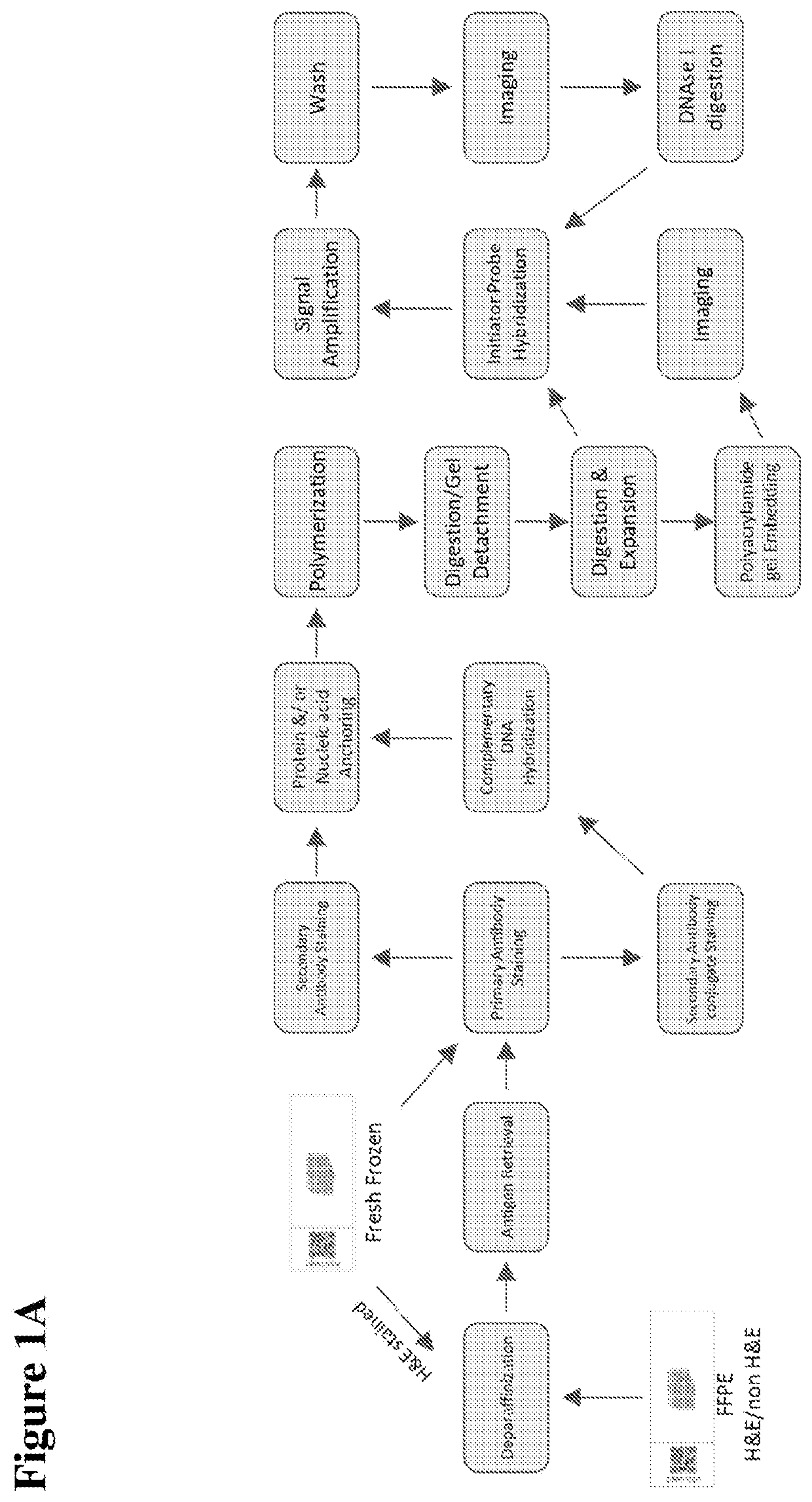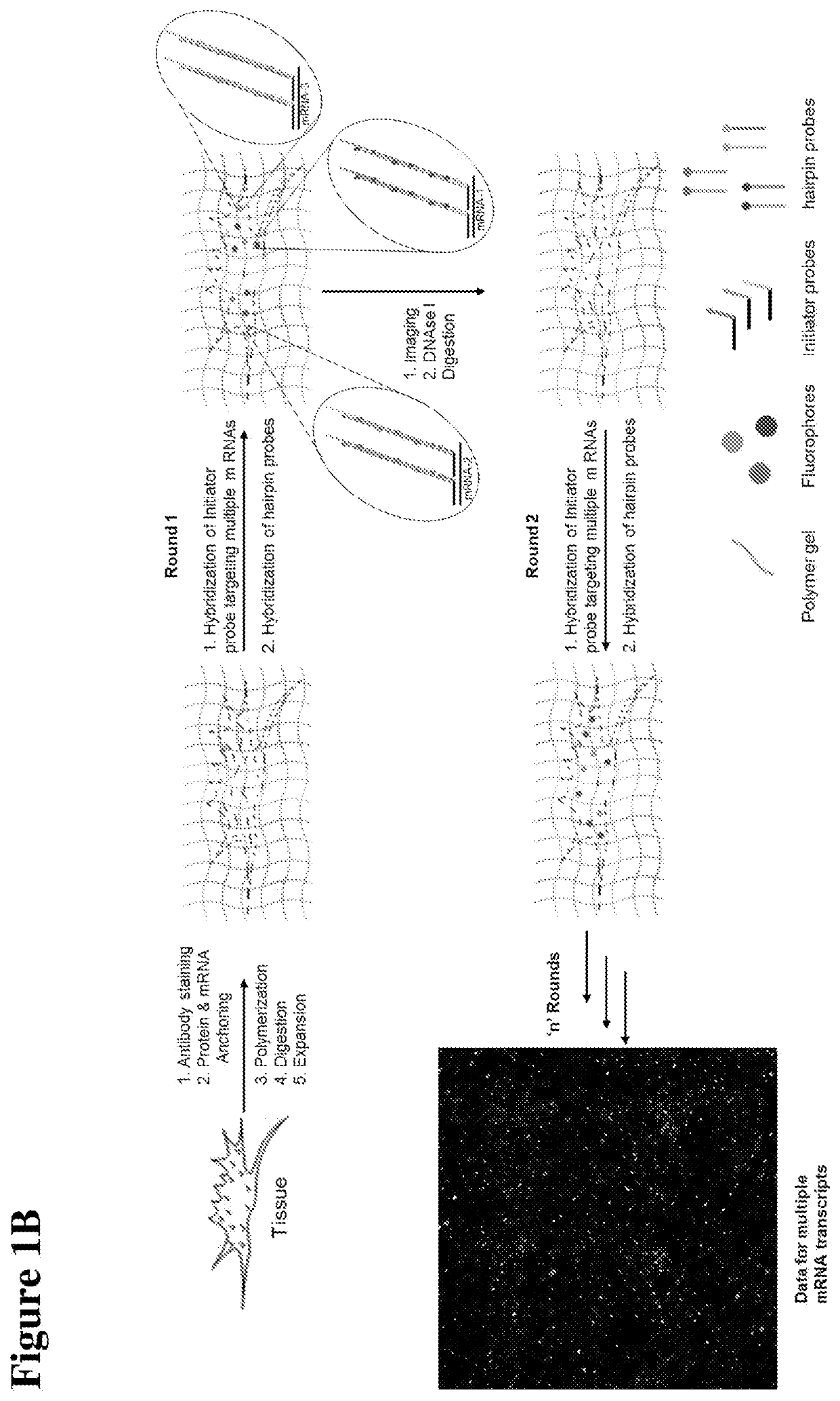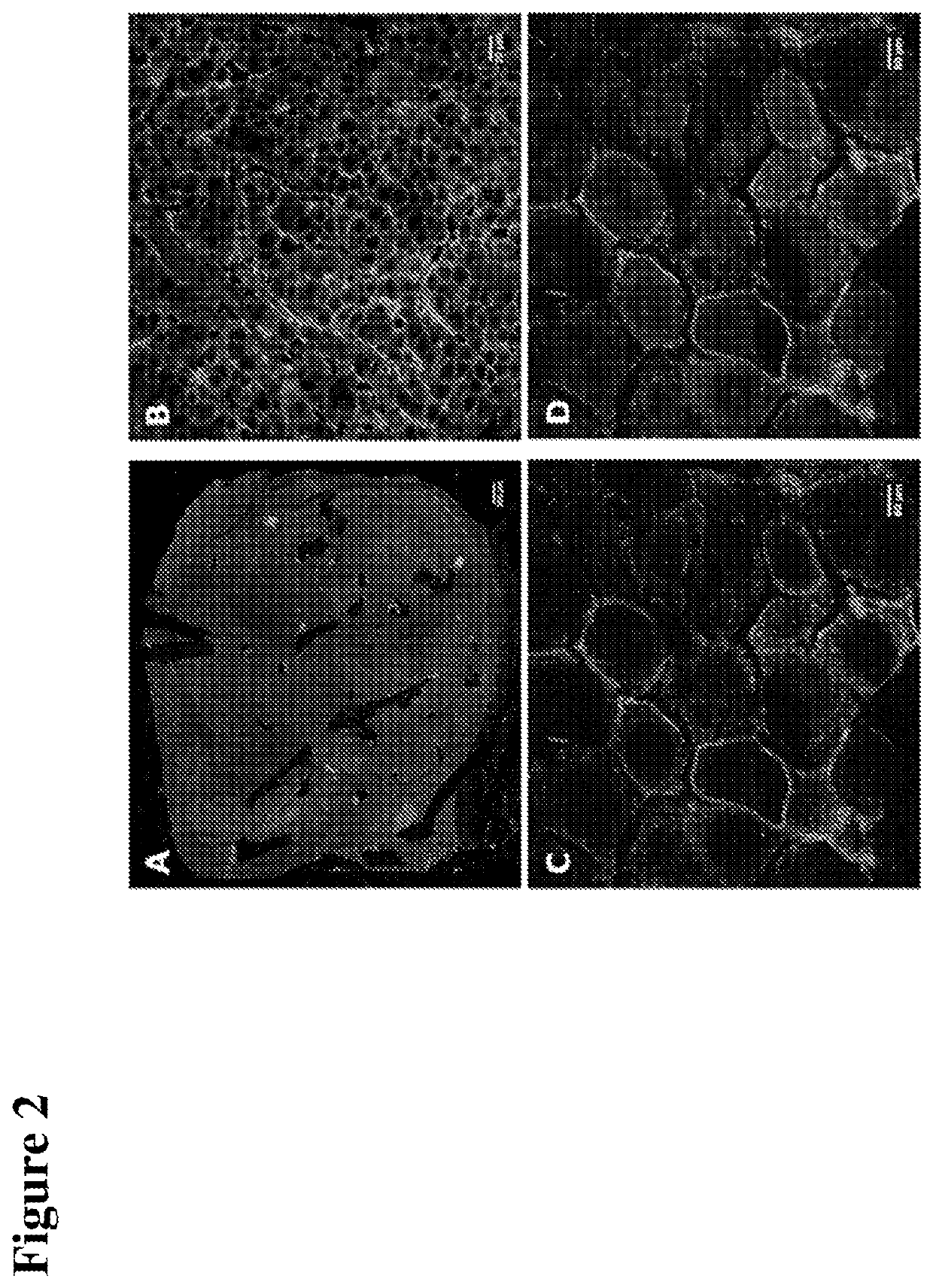Expansion microscopy compatible and multiplexed in situ hybridization of formalin fixed paraffin embedded tissue sections for spatially resolved transcriptomics
a paraffin embedded tissue and expansion microscopy technology, applied in the field of imaging, can solve the problems of reducing the ability to systematically map transcriptional variations across a large number of genes, reducing the accuracy of rna spot count quantification, and limited strategy
- Summary
- Abstract
- Description
- Claims
- Application Information
AI Technical Summary
Benefits of technology
Problems solved by technology
Method used
Image
Examples
example 1
[0177]As shown in FIGS. 1A and 1B, and an FFPE biological sample adhered on a slide (e.g., a frosted glass slide) is obtained. Under RNAse-free conditions, the sample undergoes deparaffinization, followed by antigen retrieval and subsequent staining with primary and secondary antibodies. Also under RNAse-free conditions, the RNA in the sample is linked, directly or indirectly, to a gel binding moiety. The sample is then contacted with a solution comprising monomers of a polyelectrolyte gel, which are then polymerized by free radical polymerization to form the polyelectrolyte gel, as well as anchoring the protein and RNA to the gel. The sample is digested, and the gel is detached from the slide; the gel is then dialyzed to expand it, optionally followed by polyacrylamide embedding and imaging. The next step is probe hybridization, HCR amplification, followed by washing, imaging, and digestion with DNAse I. Subsequent rounds of probe, hybridization, HCR amplification, washing, imaging...
example 2
[0178]More specifically, for an RNA target of interest (e.g., an mRNA), a single-stranded DNA probe is provided having a 5′ sequence complementary or partially complementary to a sequence of the RNA target of interest, and a 3′ HCR initiator domain having a first initiator segment and a 3′ second initiator segment. The probe is optionally also operably linked to a detectable label. The expanded gel is contacted with the DNA probe under conditions to selectively hybridize with the RNA target of interest. If the probe includes a detectable label, an image may be taken of the gel.
[0179]An HCR amplifier is provided, which comprises a first DNA hairpin molecule and a second DNA hairpin molecule, and which coexist metastably in the absence of the probes hybridized to the RNA target of interest. The first DNA hairpin molecule sequentially comprises (i) a first domain comprising a 5′ tail complementary or partially complementary to the 3′ second initiator segment of the 3′ HCR intiator doma...
example 3
[0183]For an RNA target of interest (e.g., an mRNA) in a biological sample of interest, and a plurality of unique single-stranded DNA probes are provided. Each unique probe has a 5′ sequence complementary or partially complementary to a unique sequence of mRNA target of interest, and a 3′ HCR initiator domain having a first initiator segment and a 3′ second initiator segment The probes are optionally also operably linked to a detectable label. The expanded sample is contacted with the DNA probes under conditions to selectively hybridize with the RNA targets of interest. If the probes include a detectable label, an image may be taken of the gel.
[0184]An HCR amplifier is provided. The HCR amplifier comprises a first DNA hairpin molecule and a second DNA hairpin molecule, which coexist metastably in the absence of the probes hybridized to the RNA target of interest. The first DNA hairpin molecule sequentially comprises (i) a first domain comprising a 5′ tail complementary or partially ...
PUM
| Property | Measurement | Unit |
|---|---|---|
| pH | aaaaa | aaaaa |
| dissociation constant | aaaaa | aaaaa |
| dissociation constant | aaaaa | aaaaa |
Abstract
Description
Claims
Application Information
 Login to View More
Login to View More - R&D
- Intellectual Property
- Life Sciences
- Materials
- Tech Scout
- Unparalleled Data Quality
- Higher Quality Content
- 60% Fewer Hallucinations
Browse by: Latest US Patents, China's latest patents, Technical Efficacy Thesaurus, Application Domain, Technology Topic, Popular Technical Reports.
© 2025 PatSnap. All rights reserved.Legal|Privacy policy|Modern Slavery Act Transparency Statement|Sitemap|About US| Contact US: help@patsnap.com



